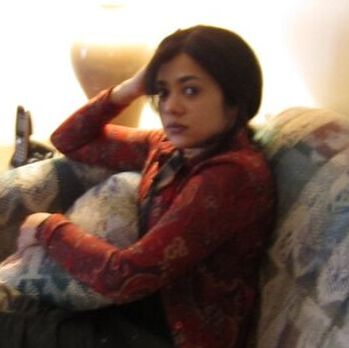ASSAY: A JOURNAL OF NONFICTION STUDIES
6.2
6.2
|
In the second decade of the twenty-first century, at a time when verbal, visual and aural real-time streams have altered the fabric of everyday realities, we inhabit in the astute words of Rob Nixon “a new normal that places a great creative and commercial premium on making a show of reality” (Nixon 30). As a result, we are confronted with questions such as what technologies shape a particular society’s perception at any given time, of the coordinates of reality, what can be accepted as real, why reality matters and to whom, and what types of voices and institutions are legitimized as the purveyors of reality. Modeling my theorization on the inquiries that constitute Michel Foucault’s “regime(s) of truth,” I will argue that questions like these frame what we may call a regime of reality. Linking reality to the explicitly political notion of a “regime” means understanding the former as procedural and constructed, rather than as a passive principle, inertly waiting to be recognized and captured as in fact pure reality. This theorization of reality as an artifice rather than an objective essence located outside power foregrounds the idea that productions and circulations of reality can be, and in fact are being, changed.
It is in this context that I want to draw attention to twenty-first century nonfictional narrative forms that are invested in the relation between reality and systems of power. Several contemporary critics like Ian Jack, Walter Benn Michaels, and Henry Twidle have demonstrated their interest in the themes of this corpus of narratives, but what is of interest to me in such works is not only their thematic orientations, but also their formal commitments, which, in my opinion, extend the conversation about the procedural and constructed nature of reality. These nonfiction texts very often situate themselves at the crossings of cyber exchanges, smart telecommunication, reality TV, Youtube, and social media, while also embedding in these new age media “older” modes of scripting reality, such as journalistic reportage, life writing, history, archival reconstruction, and urban studies. The narratives I refer to range from the Polish non-fiction author Andrzej Stasiuk’s East (2014) with its employment of memoir and travelogue to destabilize the very category “East,” to the Belarusian investigative journalist, essayist and oral historian Svetlana Alexievich’s “polyphonic writings” on the basis of which she was awarded the Nobel Prize for Literature in 2015. They includes documents like the British cartoonist Kate Evans’ Threads (2017) which uses pencil sketches and verbal reportage to examine Europe’s responsibility in the current refugee crisis, the American author David Shields’ manifesto Reality Hunger (2011), a literary collage calling for and instantiating in its own stylistics the obliteration of boundaries between fiction and nonfiction, and the South African poet and writer, Antjie Krog’s Change of Tongue (2003) with its blend of fiction, poetry, and autobiography in the service of documenting struggles for truth and salvation in the South African present. It is in this context that I will be looking at the Indian journalist and writer Aman Sethi’s work of narrative reportage, A Free Man: A True Story of Life and Death in Delhi (2012). This work plots in a contemporary urban Indian scenario clashing regimes of reality, each struggling to dominate the other, one giving way to the other, and in the best of circumstances, coming together in inextricably entwined forms, to shape a new politics of reality. A Free Man tells of Mohammad Ashraf, a dislocated, homeless, nomadic laborer and the journalist (Aman Sethi) who wants to write about his life. Having come upon his subject while he was working on an article concerning a 2005 Delhi government proposal to provide construction workers with medical insurance, Sethi proffers a significant account of the Indian capital city’s transformation from a slow-moving administrative-bureaucratic machine to what in the late twentieth and early twenty-first centuries was increasingly showcased as the glistening metropolis of a rising Asian superpower. At the center of this tale of transformation is Sethi’s story about Mohammad Ashraf, with whom he spends a great deal of time in an effort to know his everyday life. However, this central character of Ashraf, the eponymous “free man” of the title, is not merely a static figure on whom rides the account of a fast-changing urban formation with its quickly shifting economic, political and cultural landscapes. Indeed, actively challenging the stereotype of the immobile object of journalistic-ethnographic study, Mohammad Ashraf observes Sethi as intimately and with as much agency as the reporter observes him. In the course of the book, the journalist enters into the reality of the life of a laborer, and the laborer penetrates and thereby scripts the life-world of a privileged high-end journalist. The result is that A Free Man is not in fact about one man: rather, it is as a review of the book by Amar H. Abbas tells us, actually, “the story of two men” (Abbas 431). What is important is not just that A Free Man is the story of two men rather than one, but that it is the story of two men from opposite ends of the spectrum of opportunity in Delhi. These “ends,” are marked by positions of advantage and relative powerlessness, ostensibly moved further and further apart from each other as the spectrum was stretched almost to breaking point by accelerated economic, political, and socio-cultural changes. Given their progressively polarized locations in such a context, it goes without saying that Mohammad Ashraf and the journalist Sethi-persona of A Free Man inhabit and navigate entirely different realities and Sethi’s work undoubtedly makes these schismatic realities clear. However, the strength of the text lies not simply in its awareness that the turn of the century Indian context is pockmarked by myriad perceptions of what counts as real, all crisscrossed by asymmetrical accesses to power. Instead the remarkable potency of Sethi’s work unfolds when the distinct realities of Ashraf and Sethi brush up against one another, push into another, and wrap around one another, and in doing so destabilize established power differentials. Such destabilization brings up questions, the likes of which we have encountered before: which of these two men is authorized to speak on behalf of reality and by whom? What institutions of knowing enable them to cognize different realities? Are they empowered to understand reality as an artifice? How are their constructions of reality sustained and/changed when the technologies for recording what counts as real transformatively shape the very experiences they are committed to represent? The subtitle of Sethi’s work—A True Story of Life and Death in Delhi—hones in on Truth as a category of value, and it is from this point of departure that I will propose a regime of reality in relation to Michel Foucault’s account of regime(s) of truth. The will to represent and record reality, especially in journalistic discourse, has at its foundation an epistemological claim to the power of truth, that power which invites acceptance not through coercive mandates, but by its very nature as truth. Such power is perhaps nowhere better noted than when Foucault flamboyantly states in his 1979-80 lectures “On the Government of the Living”: “It is true, and I submit to it. I submit to it, since it is true, and I submit inasmuch as it is true” (Foucault 2014: 96). The point of this flamboyance, I believe, is that Foucault wants to challenge his own conceptualization of a “truth regime” which he had earlier somewhat cryptically elaborated in a 1976 essay on the “political function of the intellectual.” In 1979-80, three years after this essay, Foucault no longer thinks that the two notions, “truth” and “regime,” can go together because as he argues “there is no need for a regime to be added, as it were, to truth itself. Truth itself determines its regime, makes the law, obliges me” (Foucault 2014: 96). However, my contention is that the idea of a truth regime which Foucault abandoned is in fact a rather more potent one than that of Truth that is sufficient unto itself. Because a regime of truth speaks more animatedly to the struggles for truth that traverse the fields of realities presented to us by science, religion, politics, cultural forms, and everyday experiences, these contestations form the very pulse of Foucault’s attempt to understand truth—via Nietzschean history and genealogy—as a historical practices embedded in a continual and continuing play of dominations not unfamiliar to the political sense of “a regime.”
|
|
Manisha Basu is Associate Professor of English, African Studies, and Criticism and Interpretive Theory at the University of Illinois, Urbana-Champaign. She is the author of The Rhetoric of Hindu India: Language and Urban Nationalism (Cambridge University Press; 2016) and co-editor with Anastasia Ulanowicz of The Aesthetics and Politics of Global Hunger (Palgrave Macmillan; 2018). Basu is currently working on a book tentatively titled Regimes of Reality: India in her Contemporary Narrative Nonfiction and it is the research for this project that informs her essay for this special issue.
|

